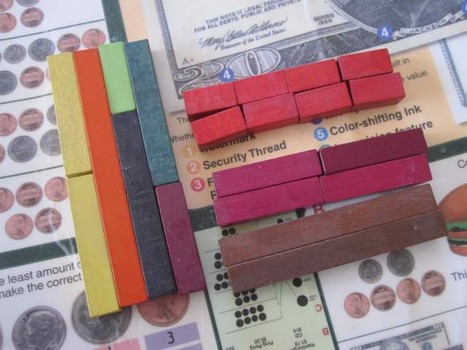 Math seems to trigger some ancient fight-or-flight mechanism in some otherwise brilliant children.
Math seems to trigger some ancient fight-or-flight mechanism in some otherwise brilliant children.
This irrational fear of math can cause kids who don’t feel good at the subject to avoid doing it, leading to a snowball effect of more avoidance, falling farther behind and feeling more panic about not understanding it (and more avoidance).
Luckily, if you can find some ways to improve your child’s math abilities then the math angst begins to disappear. The better children get at various types of math, the less anxiety it causes and the more happily they’ll sit down and tackle it.
If you have a math-phobe, here are ten ways to sneak in some serious numerical education.
- Build or remodel something. Whether it’s woodworking projects or installing flooring, these projects require lots of measurements and calculations.
- Play games together. Even if you don’t play a game that requires math (such as Blackjack or dice games), it’s generally worked in through score keeping, money changing and even logic.
- Sew something together. Your child will need to figure out measurements, fabric requirements and more. Design your own patterns to really make things interesting.
- Shop. We often hit the clearance sales at stores like Herbergers, where they frequently have 70% off and 90% off sales. The kids need to be able to figure out how much things cost to know whether we can afford them. Stores like Michaels generally have 40% off coupons for any one item, and I help them figure out the new price.
- Get out the Cuisenaire rods. These little colorful manipulatives are fun for building, making designs, solving problems or just fiddling with. They’ll also quite effortlessly help your child make math connections. For instance, line up 2 yellow (5 unit) rods to equal the length of an orange (10 unit) rod. A green (3) and a black (7) also equal an orange. What if I line up 4 lavender (4 unit) rods — are there any other colors that will fit evenly on top? A little trial and error will reveal that red (2 unit) rods will also fill the space (along with white 1-unit cubes, of course), or that if the child makes 2 rows of 2 lavenders then brown (8 unit) rods will also fit evenly. Your child has just found all of the multiples of 16 (under 10, anyway), just playing!
- Start a nutrition project. Start logging family calories, sugar grams, salt intake and so on, and the math will be nonstop. How many calories am I eating if a serving size is 2/3 of a cup and I had 2 cups? If this is 30% of my sodium allowance for the day but I only had half a serving, how much of my allowance have I used? What’s the calorie count of this recipe, if these are the ingredients and this is a list of how many calories are in each teaspoon or cup?
- Start an exercise project. Likewise, you can work in some physical education. With winter coming, it can be harder for kids to get enough daily exercise. Assign them some daily activity, either in the form of time spent on activities or actual calories burned. Kids can figure out whether they want to do something strenuous for less time, or something easier for more. Kids can find the calories burned for simple exercises like running and roller blading here, along with how to figure out their BMI. For a full list of activities they can choose from, along with the calories burned for each, click here. As you can see, the calories vary widely depending on your body weight. Help kids figure out how to adjust the numbers for their own weights. Programs like Wii Fit often involve math in personalizing their settings, too.
- Put on Cyber Chase. Even if your child is past the cartoon age, this PBS show is excellent for teaching pretty sophisticated math concepts in a very easy to understand way. We watch it through Hulu, but you may be able to find it through other sources like You-tube. Kids can also play lots of math-themed CyberChase games online.
- Make it easy. Provide calculators, math charts, cheat sheets and other means to fill the environment with math facts and make answers easy to access. This is not the time to make your child struggle to remember 12 times 7 before you can move on with a science project. When kids can easily find the answers, they stop feeling fearful about math. Not only do they slowly start to memorize the facts as they use them, but they also are more willing to tackle big math concepts.
- Provide lots of fun math tools. Protractors, compasses, rulers, tape measures, kitchen scales, barometers, temperature guns, pedometers, adding machines and similar items all help make math fun.
Remember, keep it all low-stress. Provide help and answers any time they’re requested. Once math doesn’t feel like a test they’re failing, kids can learn that it really is easier than they think — and more fun, too.
***
This article originally appeared on examiner.com.




